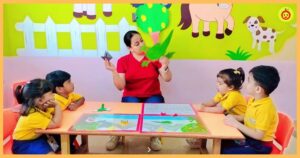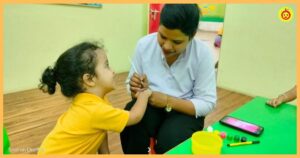Table of Contents:
- Introduction
- The Importance of Music and Movement for Preschoolers
- Enhancing Motor Skills through Music and Movement
- Cognitive and Emotional Development
- Social Interaction and Communication
- Incorporating Music and Movement into Preschool Activities
- Tips for Implementing Music and Movement
- Conclusion
Introduction
The Time for quick growth and development of young brains is when they are in preschool. One useful way to support their development is through music and movement activities. In this blog, we’ll explore the many benefits of integrating music and Movement into preschool education, fostering an environment that encourages physical, cognitive, and social development.
The Importance of Music and Movement for Preschoolers
- Engaging Learning Experience:
The one thing that captures children’s attention is Music and Movements. Music and Movement make learning enjoyable.
- Multisensory Learning:
Music and Movement are activities that engage multiple senses, helping children learn concepts more effectively and easily.
- Emotional Expression:
Children can creatively express their emotions. Music also allows children to express themselves freely.
Enhancing Motor Skills through Music and Movement
- Fine Motor Skills:
Activities like fingerplays and rhythmic clapping improve hand-eye coordination.
- Gross Motor Skills:
Dancing and active movement games enhance balance and physical coordination.
Mental and Emotional Development
- Memory and Language:
Learning songs and lyrics promotes memory retention and language development.
- Emotional Regulation:
Music helps children express and understand their emotions.
- Creativity:
Improvisation in music and movement activities fosters creativity and imagination.
Social Interaction and Communication
- Teamwork:
Group activities promote cooperation and teamwork.
- Communication Skills:
Children learn to listen, follow instructions, and express themselves.
- Confidence Building:
Performing in front of peers boosts self-esteem.
Incorporating Music and Movement into Preschool Activities
- Circle Time:
Start the day with music and Movement to set a positive tone.
- Themed Activities:
Align songs and movements with weekly themes or topics.
- Outdoor Play:
Take advantage of outdoor spaces for active games and dances.
Tips for Implementing Music and Movement
- Age-Appropriate Activities:
Personalise activities to the developmental stage of the children.
- Use Props:
Include props like rhythm instruments or ribbons for added engagement.
- Create a Routine:
Consistency helps children expect and enjoy music and movement time.
- Encourage Participation:
Be enthusiastic and encourage every child to participate.
- Be Inclusive:
Adapt activities for children with different abilities.
Conclusion
Music and Movement are powerful tools in preschool education, offering a range of benefits that support a child’s physical, mental, emotional, and social development. By combining music and movement activities into the preschool curriculum and following the tips provided in this blog, educators and parents can create an engaging learning environment that nurtures the growth and well-being of every child.






